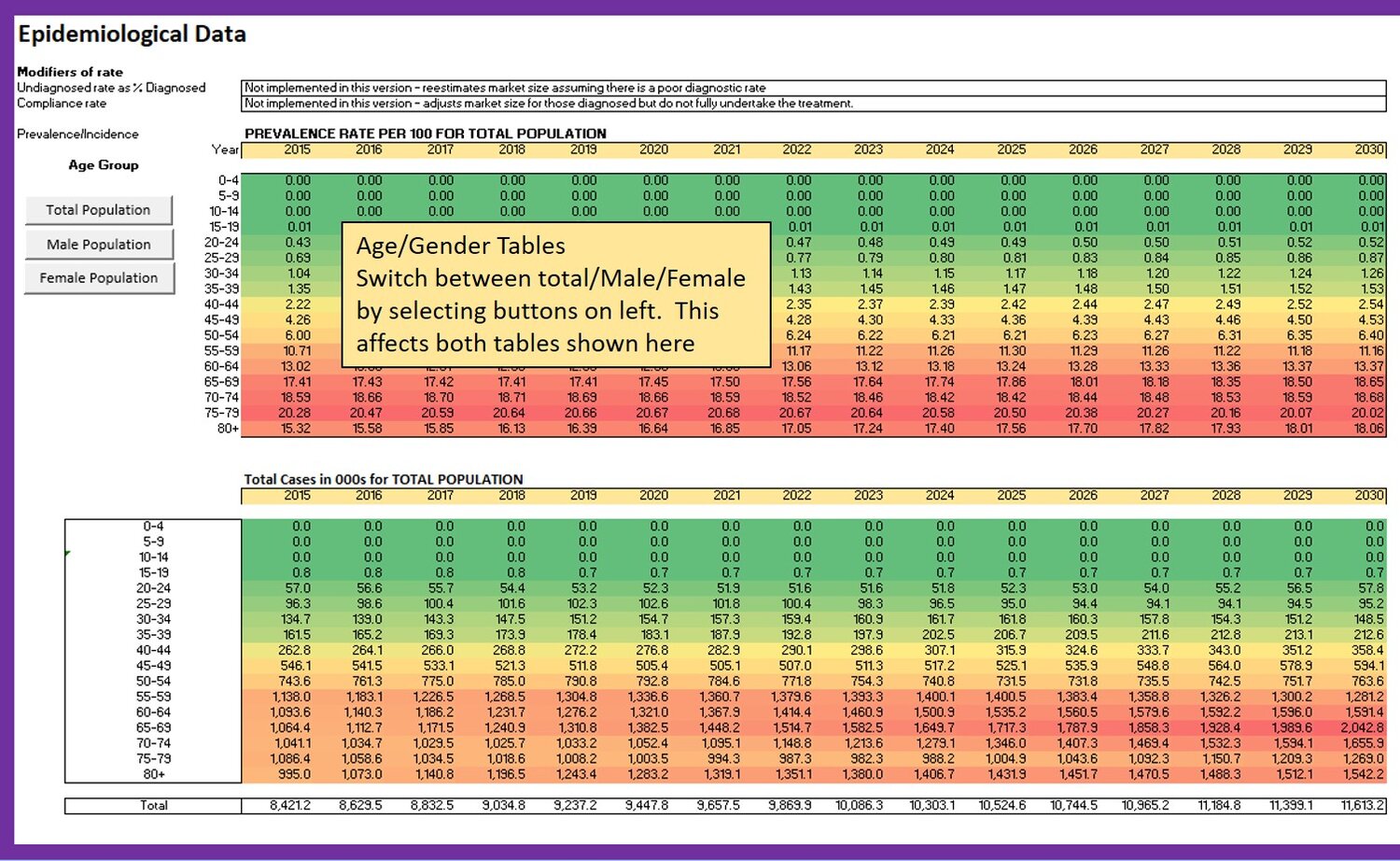Epi, ability to pay willingness to pay model
Epidemiological, Ability to Pay and Willingness to Pay Model
Willingness to Pay Table
INTRODUCTION
The data for this table is normally provided by the client.
It is usually obtained from a survey of persons with the selected condition and involves a question or questions which determine their propensity to pay for the treatment at different price points.
The normal pattern is similar to that shown
- At a low price a high income household (bottom left of table) would have a high propensity to purchase and
- At a high price a low income household (top right of table) has a low propensity to purchase.
For clarity of communication the data in this table is the estimated probability of a person with the condition and with an income of X purchasing at a price point of y. For example, in the table shown below a persons with the condition and has a household income between US$10,000 and US$15,000 has a 73% probability of purchasing at the price US$220 but this reduces to 13% at the highest price of US$500.
Also this will only be relevant if the previous section has found that a person with that income level can afford the treatment. There is a big difference between ‘willing to pay’ and ‘ability to pay’. Most of us would be willing to pay a lot for a luxury holiday but the reality is we cannot afford it!!! This Model screens that false overstatement out. Without Ability to Pay the market can get overstated.
CHOICE OF CURRENCY
The user would proceed with the same currency selected for the Ability to Pay section.
THE PRICE POINTS
These are in the row labelled ‘Price Range (USD)’
Typically the survey data should have 5 or more price points to be sufficiently sensitive. However, any number greater than 3 can be used.
Be aware that the lowest and highest price points will also be the limits for subsequent simulations of market uptake.
INCOME BREAKS
Smaller samples will be constrained in terms of the number of income breaks they can use in order to have adequate observations to establish the shape of the distribution within each income break. Ideally you want a minimum of 30 observations for each income break.
Global Demographics have algorithms to determine the overall shape of the table from partial data and can assist to convert the survey data into a full matrix such as that shown here.
SUB SAMPLES
Willingness to pay can vary within the overall sample by specific segments. For example age groups, or how long they have had the condition.
The facility is included in the model to look at just such sub samples. By selecting a subsample and then clicking on the button (Load the Willingness to Pay Table) the table will be updated for the selected country and sub sample (eg age group) – and used in the subsequent analysis.
Important Note: Be aware that the selection of a sub sample determines the contents of the subsequent stages. For example if ‘Female 0 to 39 yrs’ is selected in this section, then the market size estimates and price volume model will be based just on Females aged 0 to 39 years of age.

Learn More
By 2045
The total population of China is projected to decline to 1.378 billion persons – down from 1.411 in 2020 (Census). This assumes the average birth rate per thousand women aged 15 to 49 increases from 44 (in 2019) to 50 in 2024 and then declines to 46 by 2045, reflecting trends in improved education and affluence.
Annual births in 2024 are expected to be 15.7 million and are projected to decline to 12.4 million by 2035 and 11.541 million by 2045.
For more information on births in China, see our Special report on this topic
Learn More


